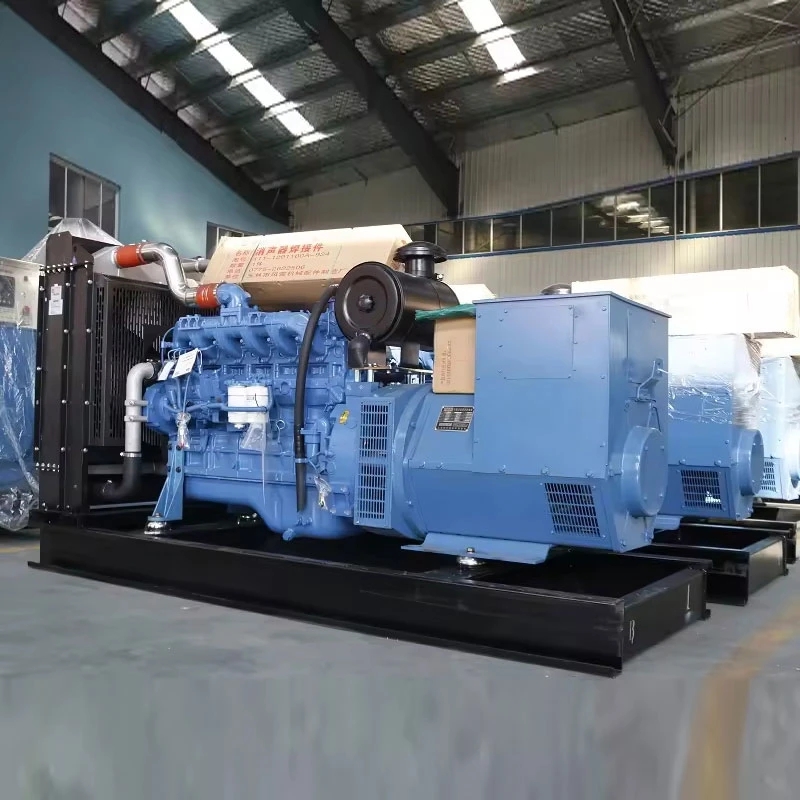Diesel Generators for Compliance Analysis A Comprehensive Guide

Introduction
In today's world, the use of diesel generators has become increasingly common in various industries and applications. These generators provide a reliable source of backup power in case of grid failures or emergencies. However, with the growing concerns about environmental impact and regulatory compliance, it is essential for businesses to conduct thorough compliance analysis when using diesel generators. This article aims to provide a comprehensive guide on diesel generators for compliance analysis, including the regulatory framework, environmental considerations, and best practices for ensuring compliance.
Regulatory Framework
Before delving into compliance analysis, it is crucial to understand the regulatory framework governing the use of diesel generators. In many countries, including the United States and European Union, there are stringent regulations in place to limit emissions from diesel generators and ensure environmental protection. These regulations typically set limits on emissions of pollutants such as nitrogen oxides (NOx), particulate matter (PM), and carbon monoxide (CO), as well as noise levels.
In the United States, the Environmental Protection Agency (EPA) regulates emissions from diesel generators under the Clean Air Act. The EPA sets emission standards for new diesel engines based on their size and application, while existing engines are subject to periodic emissions testing and compliance requirements. Additionally, state and local environmental agencies may have their own regulations that businesses must comply with.
In the European Union, emissions from diesel generators are regulated under the Industrial Emissions Directive (IED) and the Medium Combustion Plant Directive (MCPD). These directives set emission limits for various pollutants and require businesses to obtain permits for operating diesel generators above certain capacity thresholds. Compliance with these directives is enforced by national environmental agencies in EU member states.
Environmental Considerations
Diesel generators are known to emit pollutants that can have adverse effects on human health and the environment. Nitrogen oxides, for example, can contribute to smog formation and respiratory problems, while particulate matter can cause lung damage and cardiovascular disease. Additionally, diesel exhaust contains carcinogenic compounds such as benzene and formaldehyde, posing long-term health risks to individuals exposed to these emissions.
To mitigate the environmental impact of diesel generators, businesses should implement measures to reduce emissions and improve air quality. This can be achieved through the use of emission control technologies such as selective catalytic reduction (SCR) and diesel particulate filters (DPF), which can significantly reduce NOx and PM emissions. 50kw diesel generator and tuning of diesel engines are also essential to ensure optimal performance and compliance with emission standards.
In addition to emissions, noise pollution is another environmental concern associated with diesel generators. The continuous operation of generators can generate high levels of noise that may disturb nearby residents or wildlife. To address this issue, businesses should consider installing soundproof enclosures or barriers around diesel generators, as well as scheduling maintenance and testing activities during off-peak hours to minimize noise impact.
Compliance Analysis
Conducting a compliance analysis for diesel generators involves evaluating various aspects of their operation to ensure adherence to regulatory requirements. This analysis typically includes the following steps:
1. Emission Testing: Businesses should regularly conduct emissions testing on diesel generators to measure pollutant levels and assess compliance with regulatory limits. Emission testing should be performed by accredited laboratories using standardized methods to ensure accurate results. Any deviations from emission standards should be promptly addressed through maintenance or retrofitting of emission control devices.
2. Permitting and Reporting: Businesses operating diesel generators above certain capacity thresholds may be required to obtain permits from environmental agencies to ensure compliance with emission regulations. Permitting requirements vary by jurisdiction and depend on factors such as generator size, location, and operating hours. Additionally, businesses may be required to submit periodic emissions reports to demonstrate compliance with permit conditions.
3. Maintenance and Recordkeeping: Proper maintenance of diesel generators is essential to ensure optimal performance and compliance with emission standards. Businesses should follow manufacturer recommendations for maintenance intervals and procedures, including regular inspection of engine components and emission control devices. Keeping detailed records of maintenance activities, emissions testing results, and permit compliance is crucial for demonstrating regulatory compliance.
Best Practices for Compliance
To ensure compliance with regulatory requirements and minimize environmental impact, businesses using diesel generators should follow best practices for operation and maintenance. Some of the key best practices include:
1. Regular Maintenance: Establish a routine maintenance schedule for diesel generators to prevent breakdowns and ensure compliance with emission standards. This includes checking and replacing air filters, fuel filters, and oil filters as needed, as well as inspecting engine components for wear and tear.
2. Use of Emission Control Technologies: Consider installing emission control technologies such as SCR and DPF to reduce emissions of NOx and PM from diesel generators. These technologies can help businesses meet regulatory requirements and improve air quality in the surrounding area.
3. Fuel Management: Ensure the use of high-quality diesel fuel with low sulfur content to reduce emissions and prolong the life of diesel engines. Proper fuel storage and handling practices should also be followed to prevent contamination and ensure fuel efficiency.
4. Noise Mitigation: Implement noise mitigation measures such as soundproof enclosures, acoustic barriers, and vibration isolators to reduce the impact of generator noise on nearby residents and wildlife. Regular maintenance of generator components can also help minimize noise levels.
Conclusion
In conclusion, diesel generators play a vital role in providing backup power for various applications, but their operation can have significant environmental and regulatory implications. Businesses using diesel generators must conduct thorough compliance analysis to ensure adherence to emission regulations and minimize environmental impact. By following best practices for operation and maintenance, businesses can achieve compliance with regulatory requirements and contribute to sustainable and responsible use of diesel generators.

